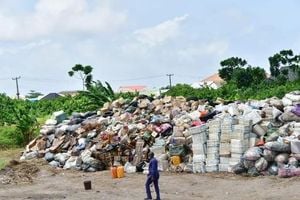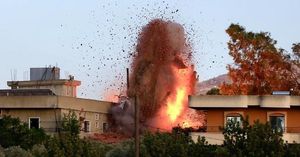Engineering researchers at the University of Alberta have taken noteworthy steps toward revolutionizing nuclear energy with the advancement of small modular reactors (SMRs). By utilizing cutting-edge 3D printing technology, they’ve created advanced materials necessary for these innovative energy systems, which are significantly smaller and more cost-effective than traditional power plants.
SMRs, which weigh between 200 and 500 tonnes and boast capacities up to 300 megawatts, are engineered to be manufactured off-site and then transported for assembly at their final locations. This design not only simplifies the construction process but also makes it feasible to install them in rural areas ill-suited for larger nuclear plants, aligning with Canada’s Energy Transition Plan.
According to the International Atomic Energy Agency (IAEA), the adaptability of SMRs allows for installations even where conventional nuclear plants would typically be restricted. This concept resonates well with Alberta's Strategic Plan geared toward deploying SMRs to remote communities, with researchers reporting potential safety enhancements through passive safety systems. Such systems are capable of mitigating or nearly eliminating the risk of releasing radioactivity during accidents.
Mostafa Yakout, mechanical engineering professor and leading figure behind the SMR initiative at the University of Alberta, recently secured $2.5 million from Natural Resources Canada's (NRCan) Enabling Small Modular Reactors Program. This funding is part of broader efforts to develop and test state-of-the-art materials fundamental to producing high-performance SMRs capable of operating at elevated temperatures.
“This is a pivotal component of Alberta's energy future,” Yakout remarked, emphasizing the importance of nuclear energy’s reputation as one of the cleanest energy sources. He believes Alberta is poised to spearhead the advancement of SMRs not just within Canada but across North America.
Yakout’s project draws on the expertise of several colleagues: James Hogan (Mechanical Engineering), Jing Liu (Chemical and Materials Engineering), and Arthur Mar (Chemistry), as well as partnerships with industry giants like Terrestrial Energy and Canadian Nuclear Laboratories. A talented group of about twelve doctoral students and postdoctoral fellows will contribute their efforts to this innovative initiative.
The research team aims to tackle the challenge of enhancing the durability and corrosion resistance of materials used within fission reactors, which must withstand extreme temperatures of up to 850 degrees Celsius. They plan to modify the performance of conventional superalloy materials, such as the widely used alloy called INCONEL 617, to boost the reactor components' lifespan and reduce the frequency of refueling, thereby optimizing efficiency.
“Our research seeks to prevent materials degradation and extend the operational life of reactor components,” Yakout explained. The team’s ultimate goal involves ensuring high-temperature, corrosion-resistant materials function effectively under rigorous thermal stress conditions, promoting safety and reducing risks of leaks or accidents.
3D printing technology plays a key role not only by enhancing design integration but also by enabling the creation of highly complex structures, which could provide significant cost and waste reductions during the manufacturing process. Yakout is also exploring potential applications for these innovations outside the nuclear sector, branching out to fields such as aerospace, defense, and space exploration.
The Alberta government's strategic vision regards SMRs as the next frontier of nuclear innovation, asserting their ability to deliver safe, reliable, zero-emissions energy poised to support growing communities and economies. With collaborative efforts among industry and government partners, Yakout and his team are striving for engineering excellence to reach regulatory benchmarks as they prepare for the reactors' future deployment.
“We need to make sure when the reactors are ready, all regulations and licenses are established, and the community is assured of their safety and cleanliness,” Yakout stated, underscoring the importance of public confidence as they move forward.
The promise of small modular reactors stands as not just another chapter in energy production but as a pivotal movement toward sustainable power solutions. With the integration of innovative materials and design technology, the aim is to carve out nuclear energy's place as a cornerstone of Alberta's and Canada's energy future.



